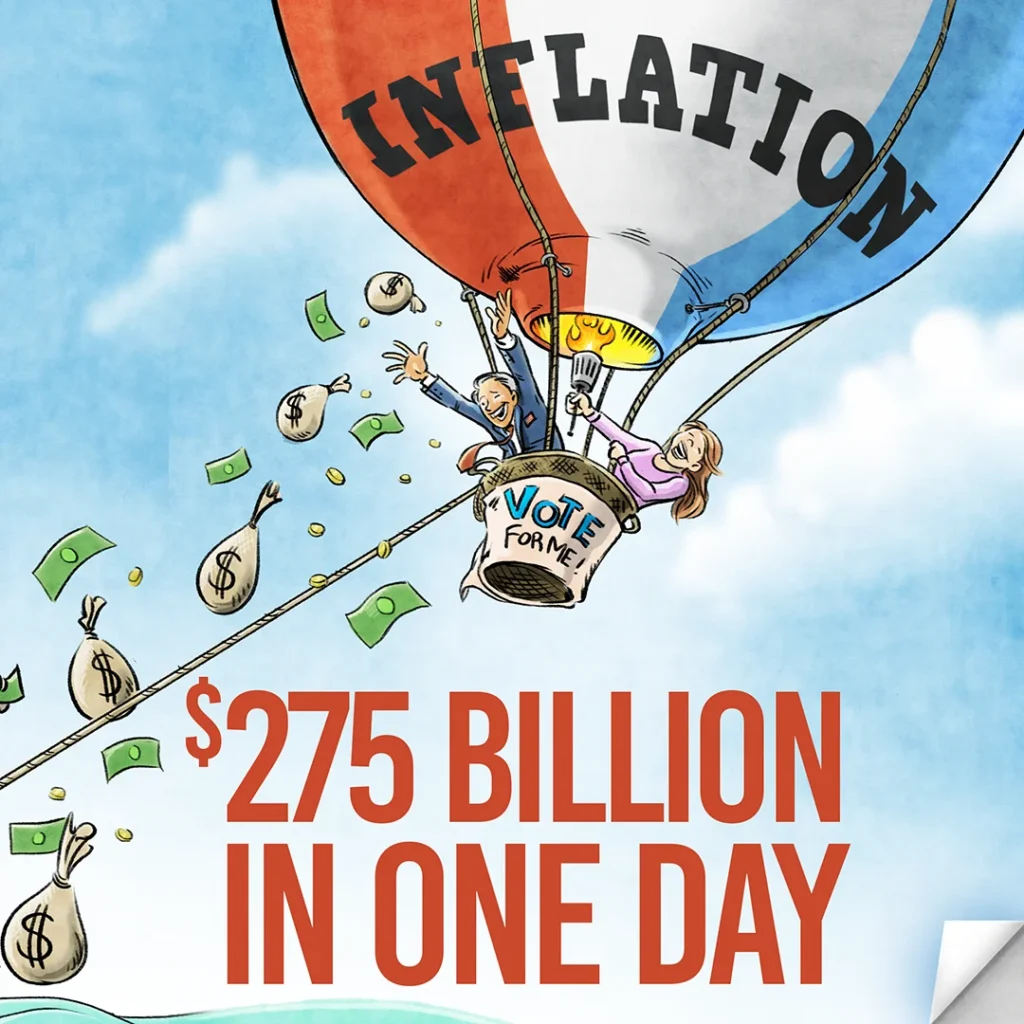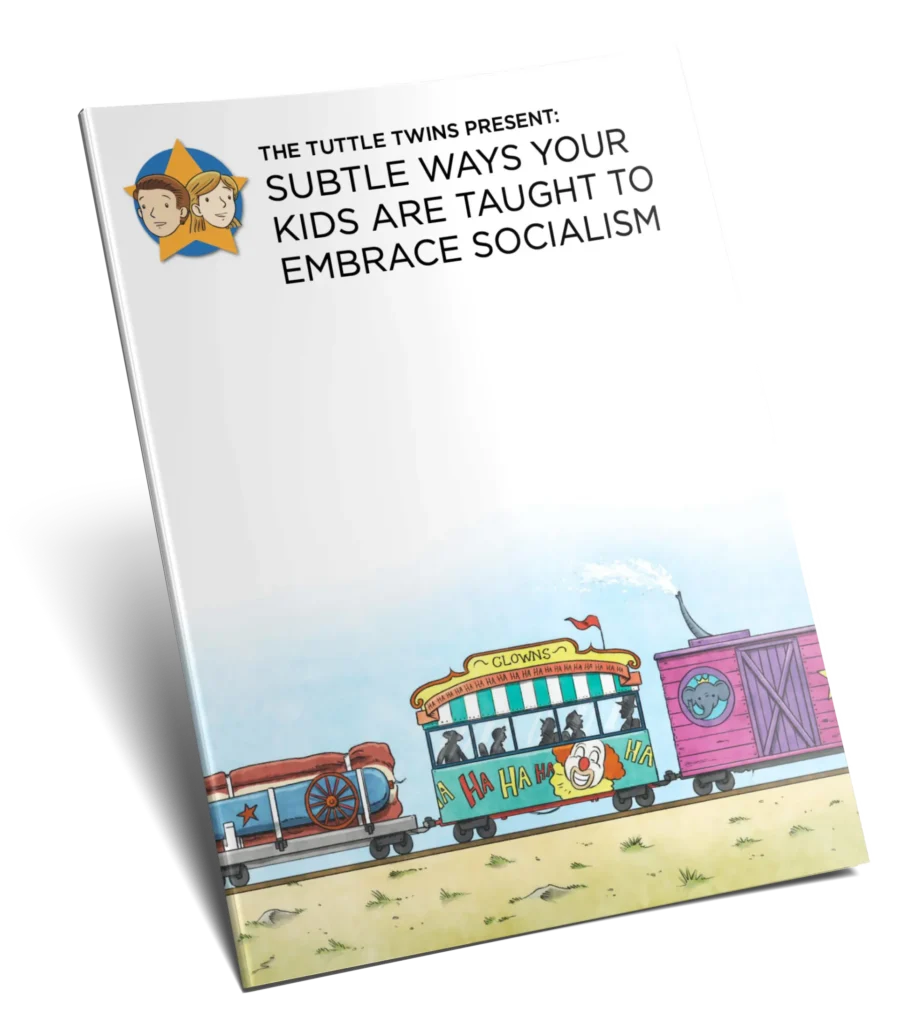SumthinWhittee
Hopefully Santa gives these out this year. Best gift to help counter the elementary school propaganda. #tuttletwins

If you’ve been following the numbers—and even if you haven’t—it’s hard to ignore the financial storm clouds gathering over the United States.
On the first day of the new fiscal year, federal debt skyrocketed by an eye-watering $204 billion, setting a new record at $35.669 trillion.
But wait! There’s more!
In addition to racking up this massive debt, the Treasury had to dip into its cash reserves, drawing down by another $72 billion.
That means, in a single day, our government added more than $275 billion in red ink.
This isn’t just a fiscal problem (although it certainly is that)—it’s a moral one.
Government spending is out of control, and the consequences are devastating for our kids and grandkids.
Every time the debt jumps, it’s like we’re passing a financial time bomb on to future generations. We’re asking them to shoulder a burden they didn’t create, and worse, we’re robbing them of the chance to build wealth, freedom, and security.
The worst part is, this reckless spending isn’t an accident. It’s part of a system designed to keep us hooked on debt—whether it’s personal, corporate, or national.
Politicians promise the moon, hand out “free” goodies, and hope you don’t notice the price tag. But the bill always comes due, and when it does, it’s the next generation that gets stuck paying for today’s bad policies.
Can you imagine blowing through $275 billion in a single day? Of course not.
Yet, that’s what our government is doing—spending with no end in sight, mortgaging the future for the sake of temporary political gain.
That’s why I’m so passionate about empowering families to learn the principles of sound economics. If we don’t teach our kids about the dangers of runaway debt and the importance of responsible spending, who will?
Certainly not the people who created this mess.
We can’t control what politicians and bureaucrats in Washington do, but there are things we can do right now as parents to help our kids understand the dangers of reckless spending and the value of sound economics.
Here are three practical steps you can take today to teach your family about personal responsibility, money, and free markets:
1. Teach the Basics of the Free Market.
Our Free Market Rules curriculum is an award-winning program that breaks down economic principles in a way that’s fun and easy for kids to understand.
With 120 lessons spread across 30 units, you’ll have everything you need to teach your kids why people produce certain things, how supply and demand set prices, and why money should be more than just paper printed by the government.
The curriculum is designed for children of all ages, and it’s perfect for family discussions around the dinner table.
You don’t need a degree in economics to use it—in fact, it’s designed to help parents learn along with their kids!
2. Show Them How Government Manipulates Money.
If you’re looking for a way to explain why prices are going up and why savings seem to be worth less and less, The Tuttle Twins and the Creature from Jekyll Island is what you’re looking for.
This story walks kids through the history of the Federal Reserve and explains how the government’s control of money leads to inflation. It’s an eye-opener for kids who are learning about money for the first time, and it gives them a real-world understanding of why prices rise and savings shrink.
Want to help your kids spot inflation in the real world and see how it impacts everyday people? This is the book for you.
3. Teach Financial Responsibility and Entrepreneurship.
In The Tuttle Twins and the Messed Up Market, Ethan and Emily learn valuable lessons about entrepreneurship as they start a Children’s Entrepreneur Market and lend money to other kids for small businesses.
However, they quickly discover that people’s decisions—often driven by short-term incentives or poor planning—can “mess up” the market.
This book is perfect for teaching kids about financial trade-offs, the risks that come with lending money, and the importance of delayed gratification.
It also highlights real-world questions like: Why don’t banks just lend money for free? And what happens when bad financial decisions get bailed out?
It’s the perfect way to help your kids think critically about their financial choices, and the importance of viewing things from a long-term perspective.
These are just three of our many resources that give families the tools they need to talk about economics, liberty, and the importance of making wise financial decisions.
If you want to help the next generation break the cycle of debt and dependence, these products are going to give you the most bang for your buck.
— Connor

There are many subtle ways that socialist ideas are being introduced, taught, and reinforced directly to your children.
Our e-book walks through several examples to help raise your attention to this agenda so you can help your children avoid being indoctrinated to support the state.
Hopefully Santa gives these out this year. Best gift to help counter the elementary school propaganda. #tuttletwins
When ur bedtime story teaches ur girl about the federal reserve & what a crock of crap it is. Vocab words: Medium of exchange & fiat currency. #tuttletwins for the win
“My just-turned-5 year old told me he is planning to read all the #TuttleTwins books today. It’s 10AM on Saturday and he’s already on his third. #Homeschooling ftw.”